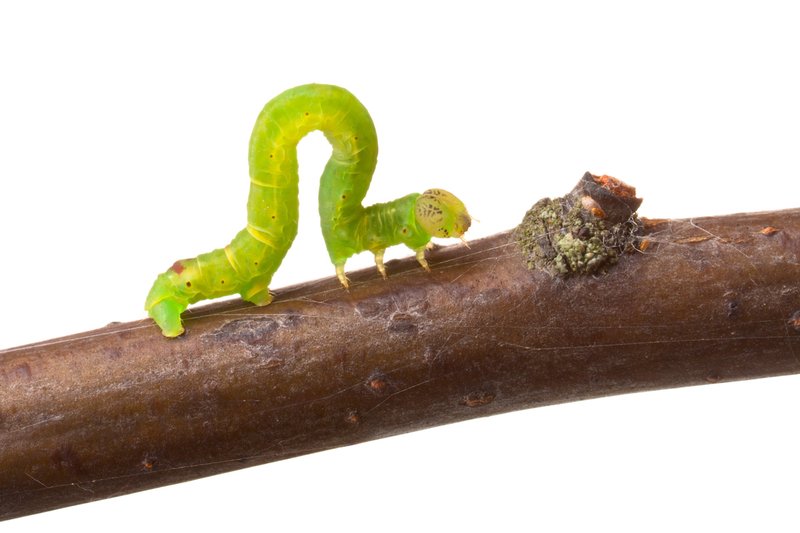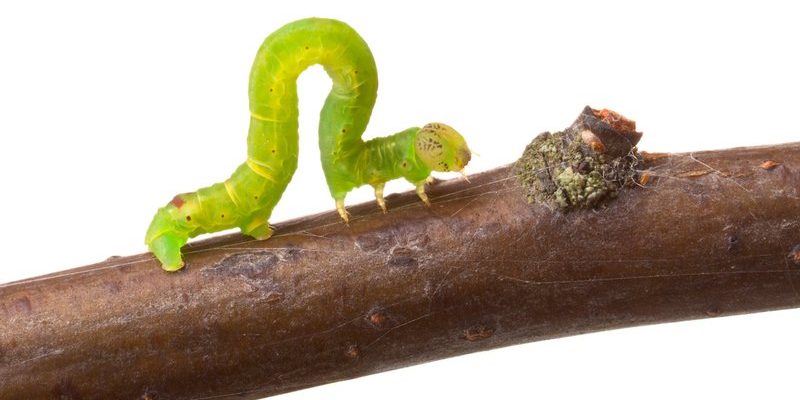
Let me break it down for you. Their bodies are specially designed to give them an edge in their environment. From strong legs to distinct prolegs, every part is honed for a specific purpose. If you’ve ever been curious about how they get around or what makes them tick, you’re in the right place. We’ll dive deep into their anatomy, specifically focusing on those important legs and prolegs and how they work together for movement.
Understanding Inchworm Anatomy
To truly appreciate inchworms, you first need to familiarize yourself with their general anatomy. Inchworms have long, slender bodies that can make them look like a tiny piece of spaghetti. They belong to the caterpillar stage of moths and have a few distinguishing features that help identify them.
One of the most notable aspects of inchworms is their segmented bodies. Typically, they are divided into three main parts: the head, thorax, and abdomen. The head is where you’ll find their tiny eyes and mouth, which help them munch on leaves. Then there’s the thorax, home to their legs. Lastly, the abdomen is where you’ll find the prolegs, which play a crucial role in their movement.
It’s also interesting to note that inchworms can vary in color and texture, depending on their species and environment. Some resemble twigs or leaves, serving as natural camouflage. This color adaptation is more than just for show; it helps protect them from predators while they’re busy inching along or munching away.
The Role of Legs in Inchworm Movement
Now, let’s dive into the **legs**. Inchworms have three pairs of true legs located on the thorax, which are used for walking. These legs aren’t very strong, but they’re quite essential for their unique movement style. If you’ve ever watched an inchworm move, you might notice that they don’t just crawl forward like most caterpillars. Instead, they appear to arch and stretch.
This motion occurs because inchworms use their legs in a somewhat coordinated way. They stretch the front part of their bodies forward while pulling the back part up and closer. It’s almost like they’re performing a little wave with their bodies. Each step they take is deliberate, leading to that classic “inching” motion. This movement not only helps them navigate their environment but also allows them to evade predators by making them look less appealing as they blend into the foliage.
Here’s the thing: their legs serve a purpose beyond just movement. They help inchworms climb, balance, and even stabilize their bodies while they wriggle or munch on leaves. So, the next time you see an inchworm, keep in mind that those little legs are working hard, even if it doesn’t look like it!
What Are Prolegs and Their Function?
Besides their true legs, inchworms have another interesting element in their anatomy: **prolegs**. These are tiny, fleshy appendages located on the abdomen. Unlike true legs, prolegs aren’t segmented and don’t have joints. Instead, they provide extra grip and support as inchworms navigate their world.
Prolegs are usually equipped with tiny hooks or claspers that help inchworms cling to surfaces like leaves or twigs. This is particularly useful when they’re trying to hide from predators. If you think about it, these prolegs act almost like suction cups. When inchworms inch forward, they first stretch out their front part, using the true legs, and then hook their prolegs onto the surface to pull the back end closer.
You might be wondering, why do they have both legs and prolegs? Well, the combination allows them to move more effectively. Their true legs are great for initiating movements and helping them balance, while the prolegs assist in holding onto surfaces. It’s a perfect marriage of two types of limbs working together to make inchworm motion smooth and efficient.
The Inchworm’s Unique Motion
So, what does inchworm motion look like up close? It’s a little like a dance, really. They perform a series of movements that can seem quite charming, yet it’s quite purposeful. Their motion is often described as “looping” or “inching,” which is where they get their name.
When inchworms move, they typically create a distinctive wave-like pattern. They start by pulling their body into a “C” shape, pushing their front legs forward while their prolegs cling to the surface for stability. Then, they extend the back end of their body to follow, creating a smooth, flowing motion. It’s almost like they’re performing a yoga pose!
This unique way of moving has its advantages. The inching motion not only helps them travel smoothly across branches but also makes it harder for birds and other predators to spot them. By blending in with their surroundings while they move in a subtle, rhythmic manner, inchworms can go about their business undetected.
Why Inchworm Motion Matters
Inchworm locomotion isn’t just a quirky feature; it’s essential for their survival. This distinctive movement helps them avoid detection by predators. With their ability to camouflage and their unique motion, inchworms can often go undisturbed as they feed and grow.
Moreover, inchworms play a crucial role in their ecosystems. As they munch on leaves, they help with the cycle of life—keeping plants healthy and in balance. Their movements aid in pollination and contribute to the overall health of their environments.
Also, as inchworms transition into their next phase as moths, their movements during the caterpillar stage prepare them for a life of flying and exploring. It’s fascinating to think that the way they wriggle and inch around today contributes to their evolution tomorrow.
Common Misunderstandings About Inchworms
Many people mistakenly think that all inchworms are just one kind of worm. However, the term “inchworm” refers to several species within the Geometridae family. Each type has its nuances, yet they all share similar anatomical characteristics and movement patterns.
Another common myth is that inchworms are dangerous or harmful. In reality, these little guys are harmless and primarily feed on leaves. They don’t bite, sting, or pose any threat to humans whatsoever. If anything, they can be delightful to watch as they carry out their inching antics.
Understanding inchworm anatomy helps demystify these creatures and reveals their importance in our ecosystems. So, the next time you see one, take a moment to appreciate how their legs, prolegs, and motion come together to create such an intriguing little being!
In summary, inchworms are fascinating creatures with a unique anatomical design specifically tailored for their environment. Their true legs and prolegs work together to create that charming, inching motion we all recognize. This highly specialized movement helps them evade predators and thrive in their habitats, all while playing a role in maintaining a balanced ecosystem.
So, whether you’re watching one inch across a branch or studying their anatomy further, remember that there’s a lot more to these little critters than meets the eye. They’re not just cute; they’re a vital part of nature’s intricate web. Next time you spot one, take a moment to marvel at their clever anatomy and delightful movements!

